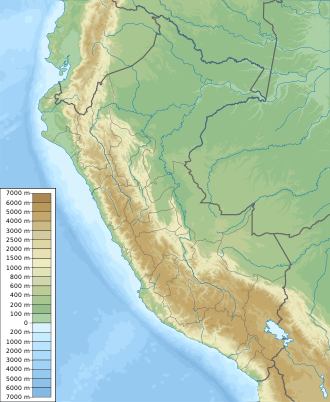| Soncco Formation | |
|---|---|
| Stratigraphic range: Late Eocene-Early Oligocene | |
| Type | Geological formation |
| Unit of | San Jerónimo Group |
| Sub-units | C, D & E Members |
| Underlies | Punacancha Fm., Tinajani Fm. |
| Overlies | K'ayra Formation |
| Thickness | 1,600 m (5,200 ft) |
| Lithology | |
| Primary | Conglomerate, sandstone |
| Other | Coal, lacustrine limestone |
| Location | |
| Coordinates | 13°20′12″S71°44′28″W / 13.33667°S 71.74111°W |
| Region | Puno & Cusco Regions |
| Country | Peru |
| Type section | |
| Named for | Soncco |
 Paleogeography of Northern South America, 35 Ma by Ron Blakey | |
Type locality of the Soncco Formation in Peru
The Soncco Formation is a Late Eocene to Early Oligocene geologic formation in southern Peru. The base of the formation at the contact with the K'ayra Formation is dated using fission track analysis at 43 Ma and the top, the contact with the Punacancha Formation, at 30 Ma. [1] In other places the Tinajani Formation overlies the Soncco Formation. [2] The formation has a thickness of 1,600 metres (5,200 ft). [3]
